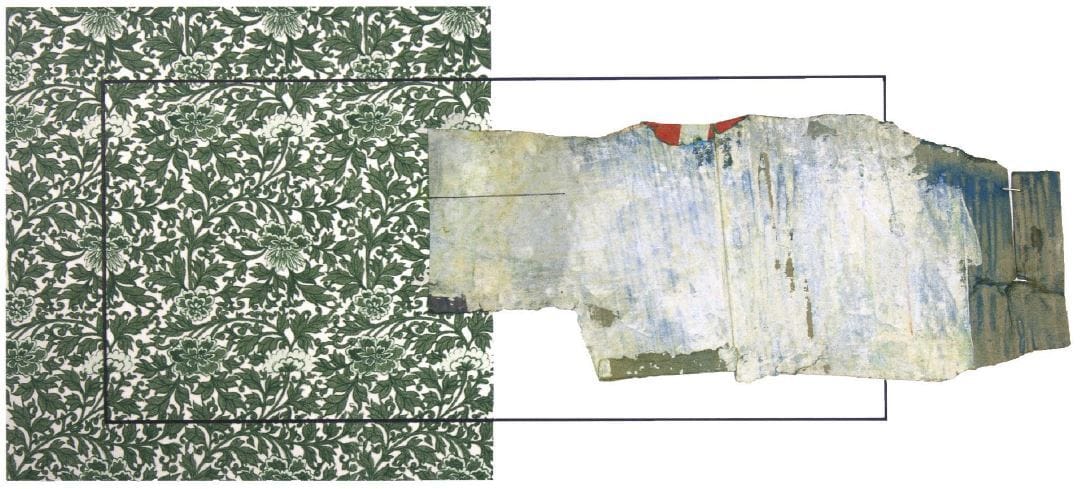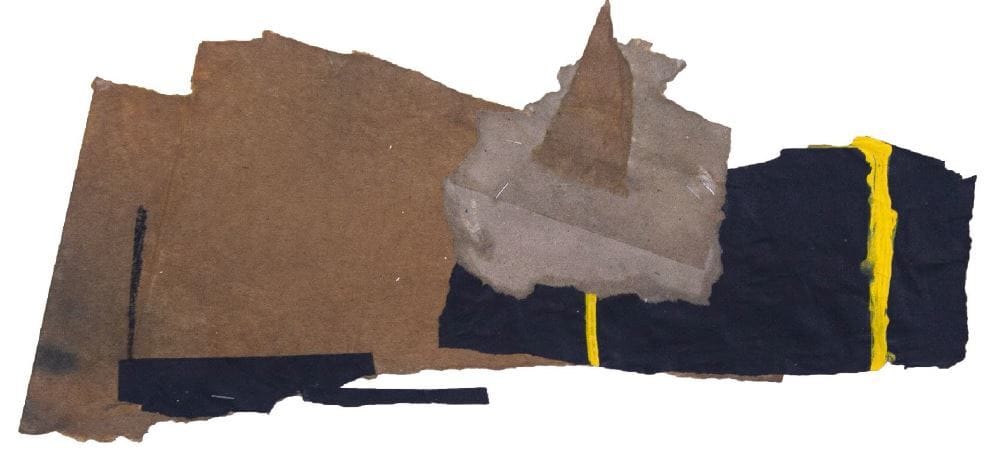- Crazy Pablo
- Posts
- Crazy Pablo: Infinite Sadness and Floating Color Fields
Crazy Pablo: Infinite Sadness and Floating Color Fields
There are moments when color says what words can’t. When a single shape can hold the weight of grief, or a soft edge can echo the ache beneath the surface. Some artworks don’t just reflect our pain, they help us release it. What if art could carry the sorrow we all share?
First time reading? Sign up here.
The Color Field (marked red)
The rust and black rectangles at the top aren't just shapes—they’re states of mind. Rothko’s work is all about emotional atmosphere. These blocks of color are what art historians call "color fields"—vast, immersive zones of tone and mood. You don’t look at them. You fall into them. The rust feels dense and slow-burning, while the black feels like a quiet void. Together, they hum with intensity.
The Ground Beneath (marked blue)
Look closer at the watery red layer below. It's not a background, it’s the surface that holds the weight above it. What we’re left with is tension and stillness, a feeling that something heavy is floating and sinking all at once.
 For over four decades, the Rothko Chapel in Houston has been a sanctuary for reflection, spiritual openness, and the pursuit of human rights. Conceived by Mark Rothko as a place beyond religion or ideology, the chapel opened just one year after the artist took his own life. | Fun FactRothko wasn’t interested in decoration - he was chasing the sublime. In the late 1960s, he designed an entire chapel in Houston, Texas, filled with 14 massive paintings in shades of black, purple, and wine. The space is non-denominational, silent, and dimly lit. Some visitors weep. Others just sit. This piece is just one window into that experience. To understand Rothko fully, you really need to see a whole room of his works. The paintings begin to speak to each other, and to you. |
Think About It 🤔
People often describe Rothko’s paintings as spiritual, but what does that really mean?
He wasn’t painting God. He was painting human feeling - grief, awe, loneliness, transcendence. That’s close to what philosophers from antiquity to modernity have described as the sublime: a beauty or emotional intensity so overwhelming it’s almost unbearable. From ancient Greek thinkers to Edmund Burke, who saw the sublime in vastness and terror, to Immanuel Kant, who connected it to the limits of human comprehension, the idea has always pointed to something beyond words. Some people cry in front of Rothko's paintings not because they're sad, but because they touch something vast and unspoken.
How does it relate to the here and now? or What to say during casual conversation to show off your art knowledge?
Grief Without Words – “Sometimes life delivers grief so raw it slips past language. Rothko’s colors feel like that kind of silence, the kind that says everything without speaking. Like standing in a feeling too big to name.”
Now have another Look!
And If You’re Up for More…
Visit the Rothko House in Latvia — the artist’s childhood home turned museum, located in the fortress town of Daugavpils. It’s the only place in Eastern Europe where you can see original works by Rothko, and it offers deep insight into his roots.
Go further back in time — The Temple of Hera II in Paestum, Italy, is believed to have inspired the design of Rothko’s chapel in Houston. It’s a quiet ruin with a powerful presence. No paintings. Just stone, sky, and silence, like Rothko, minus the color.
Till next time, If this touched something in you - reply or add a comment. Maybe that’s the sublime: the one thing that connects us all.
Yours,
Inbal Z M

Me and a Rothko at CENTRO CENTRO, Madrid, Spain.
*NEW on Crazy Pablo:
Crazy Pablo Picks
Once a month, I spotlight an artist worth knowing
unique, inspiring,
and available to collect.
Rafa Pérez Alegre turns paper scraps, photos, and everyday leftovers into poetic chaos. Inspired by collage masters like Rauschenberg and the philosophical touch of Tàpies, his works feel like visual puzzles – poetic fragments waiting to be reassembled by the viewer.
Exclusive for Crazy Pablo subscribers – enjoy a special collector’s code

Mixed media: paper, cardboard, acrylic paint. 45 x 62 cm.
Framed in white and available. Price 600 euros

Mixed media: paper, photography, cardboard, staples. 88 x 84 cm.
Framed in a wooden box and available. Price 1.200 euros

Mixed media: paper, cardboard, acrylic paint. 38 x 61 cm. Not framed and available. Price 500 euros
Visiting Madrid? Rafa welcomes visitors to his studio by appointment
(Paseo Marqués de Zafra 37)
Available exclusively through Crazy Pablo with a special subscriber discount.


Reply